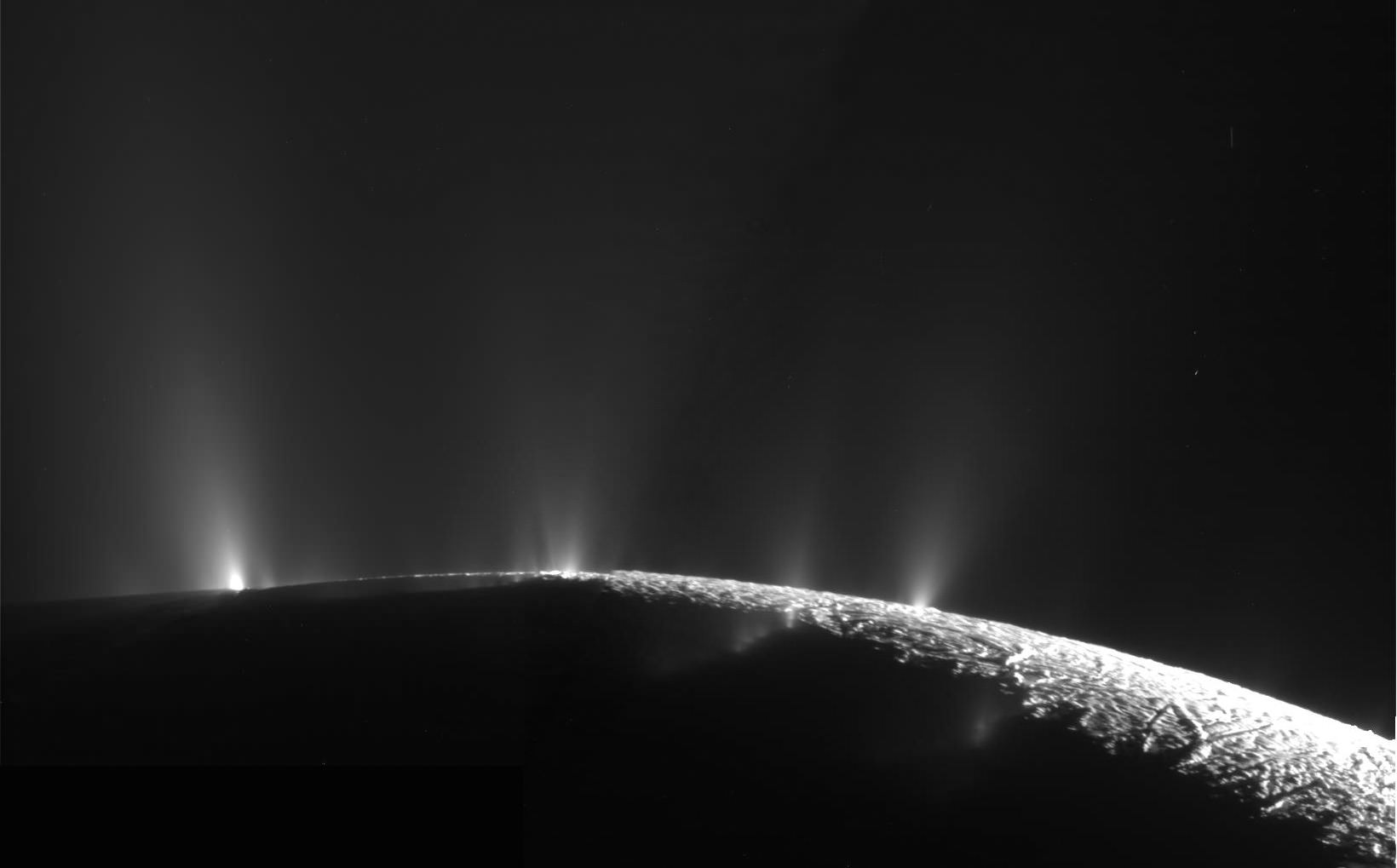Even though the Cassini mission at Saturn ended nearly four years ago, data from the spacecraft still keeps scientists busy. And the latest research using Cassini’s wealth of data might be the most enticing yet.
Researchers say they’ve detected methane in the plumes of Saturn’s icy moon Enceladus. The process for how the methane is produced is not known at this time, but the study suggests that the surprisingly large amount of methane found are likely coming from activity at hydrothermal vents present on Enceladus’s interior seafloor. These vents could be very similar those found in Earth’s oceans, where microorganisms live, feed on the energy from the vents and produce methane in a process called methanogenesis.
“We are not concluding that life exists in Enceladus’ ocean,” said Régis Ferrière, an associate professor at the University of Arizona, and one of the study’s two lead authors. “Rather, we wanted to understand how likely it would be that Enceladus’ hydrothermal vents could be habitable to Earthlike microorganisms. Very likely, the Cassini data tell us, according to our models.”
One of the biggest surprises of the 13-year Cassini mission came in Enceladus, a tiny moon with active geysers at its south pole. At only about 310 miles (500 km) in diameter, the bright and ice-covered Enceladus should be too small and too far from the Sun to be active. Instead, this little moon is one of the most geologically dynamic objects in the Solar System.

Stunning backlit images of the moon from Cassini’s camera show plumes erupting in Yellowstone-like geysers, emanating from tiger-stripe-shaped fractures in the moon’s surface. The discovery of the geysers took on more importance when Cassini later determined the plumes contained water ice and organics. Since life as we know it relies on water, this small but energetic moon has been added to the short list of possible places for life in our Solar System.
For the new study, the research team analyzed one of those plume’s material ejected into space. They looked at Enceladus’ plume composition as the end result of several chemical and physical processes taking place in the moon’s interior, where dihydrogen, methane and carbon dioxide are being produced.
“We wanted to know: Could Earthlike microbes that ‘eat’ the dihydrogen and produce methane explain the surprisingly large amount of methane detected by Cassini?” said Ferrière in a press release from the University of Arizona.
First, the researchers assessed what hydrothermal production of dihydrogen would best fit Cassini’s observations, and whether this production could provide enough energy to sustain a population of Earthlike hydrogenotrophic methanogens. To do that, they developed a model for the population dynamics of a hypothetical hydrogenotrophic methanogen, whose thermal and energetic niche was modeled after known strains from Earth.

Then the researcher team ran the model to see whether a given set of chemical conditions, such as the dihydrogen concentration in the hydrothermal fluid, and temperature would provide a suitable environment for these microbes to grow. They also looked at what effect a hypothetical microbe population would have on its environment – for example, on the escape rates of dihydrogen and methane in the plume.
The team wrote in their paper, published in Nature:
“We find that the observed escape rates (1) cannot be explained solely by the abiotic alteration of the rocky core by serpentinization; (2) are compatible with the hypothesis of habitable conditions for methanogens; and (3) score the highest likelihood under the hypothesis of methanogenesis, assuming that the probability of life emerging is high enough. If the probability of life emerging on Enceladus is low, the Cassini measurements are consistent with habitable yet uninhabited hydrothermal vents and point to unknown sources of methane (for example, primordial methane) awaiting discovery by future missions.”
“And biological methanogenesis appears to be compatible with the data,” said Ferrière. “In other words, we can’t discard the ‘life hypothesis’ as highly improbable. To reject the life hypothesis, we need more data from future missions.”
Further reading:

